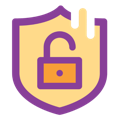Does Montessori Use Open-Ended Toys?
Simple toys with no clear end goal are one of Montessori's staples. These toys help children take the lead in their play and education, which is everything Montessori education stands for.
If we want our children to become independent and self-sufficient, we should provide them with materials and toys that invite them to be proactive rather than follow the rules and go through the pre-determined motions. Open-ended toys are precisely that.
The Montessori method and open-ended play are quite often intertwined. Yes, Montessori is about learning real-life skills through play first, but it’s also about exploration and imagination.
In Montessori, children can take up any activity they like whenever they want to. And even though the “goal” of Montessori playtime is learning a specific skill and problem-solving, the critical part is also the journey.

Any task can be achieved in multiple ways. The children’s “job” is to find a way that suits them. That in itself is open-ended. The point is that playing without a specific goal in mind can achieve the goal set by Montessori, which is learning real-life practical skills.
For example, simple scribbling on paper with crayons is an open-ended activity. It also teaches children how to grasp a pen they’ll use for writing later.
Now, let’s see what makes a toy open-ended.
What Is an Open-Ended Toy?
Open-ended toys are toys that a child can play with without set objectives. Such toys are often simple, without bells and whistles, and invite kids to think of their own way of playing with them.
The best thing is - there is no one correct way of playing with them. As long as children safely enjoy them, it’s all good. Such an approach to open-ended play exercises a child's imagination and usually leads to amazing creative play.
No Guidance Needed for Open-Ended Play
When your child picks up a stick from the ground when you’re walking in the park, you don’t show them how to play with it. It’s the same with every other open-ended toy. You simply present them with a toy and let their imagination do the rest. If you get them a box of wooden blocks, they’ll know exactly how to get the most fun out of them, as open-ended toys encourage imaginative play.
Open-Ended Toys Stay Interesting for a Long Time
A single open-ended toy might keep your child’s interest for a couple of years. The thing is, your child might find different uses for it as they grow. Let’s say they get a set of Montessori Wooden Stones for their birthday. At first, they might inspect the stones, toy with them, or bang pieces off of each other, depending on their age.
Later on, they’ll figure out how to stack them and explore more play opportunities. As months go by, they’ll revisit them and start building proper stone structures or towers. Maybe they’ll find drawing around them exciting or play a game of who can stack the most stones before they collapse. Finally, as they grow out of them, you can use them as garden decorations since they are eco-friendly. It's a win-win.
No Need for Batteries

Battery-powered toys usually keep a child’s interest for a few days, and there’s a simple explanation why. They are designed to do all the work to entertain children. They’re flashy, make their own sounds, move almost by themselves, and offer no challenge for the kids. You press a button and look at what it does.
Of course, there are also useful ones, but those are rare. Usually, they aren't made of natural materials, and they rarely exercise critical thinking or encourage creativity. That's why open-ended toys make for much better choices.
Not having a power source means a toy has to be powered by children’s imagination. And that’s what we all want - to motivate children to actively engage in creative ways during their playtime, not just sit around and observe.
Every Child Plays With It Differently
If you have more than one child, you’ll notice how they play with the same open-ended toys but in completely different ways. That’s what best open-ended toys are about - they offer numerous independent playtime possibilities, and every child plays with the same toy in their own way. That is unless your kids are in a parallel play phase. Then you’ll most likely see them copy what their siblings are doing.
Can’t Solve or Finish Them
You can’t just beat building blocks or Legos like you would a video game. Those are not one-and-done types of toys. These are among the best open-ended toys as they can be used over and over again to achieve whatever goal a child sets for themselves. One day, they might want to build a castle, and the next, a car. The only limitation is children’s imagination.
5 Benefits of Open-Ended Toys
1. They boost imagination and creativity. The fact that the best open-ended toys come without any particular instructions means that children playing with them have to envision their own imaginary playtime scenarios. This imaginative play, in turn, engages their creative and imagining muscles, which help with self-expression.
Creative play plays a huge part in children’s emotional growth.
Storytelling is another aspect of open-ended play. You’ll often hear your child talking when they engage in this type of play - they tell themselves stories. They try to put their play and toys in a context they understand and find engaging. This is great for their language skills, focus, and attention span since it offers endless creative possibilities.
2. They encourage child-led play. Since there is no end goal to these toys that would dictate the gameplay, children are the ones who say how their game time should look like. They are taking the lead and boosting their self-confidence at the same time. Child-led play is one of the main Montessori principles, which states that children learn better when they’re following their interests rather than when told what to do (whether by the teacher or a toy).
3. They inspire curiosity. Testing ideas, experimenting, and a trial-and-error approach are the best ways to learn if they can be done in safe circumstances. Open-ended toys offer exactly that. Kids can try to combine them, create patterns, stack them, fit them into one another, see if they float in their baths, and so much more. The point is If a child isn’t told how to play with a toy, they’ll always look for new ways, and that’s a great thing.
4. They support independence. Open-ended toys require no guidance from the adults. This means that kids need to make their own choice of how they’ll play with them. This seems trivial, but it’s actually not. First, kids learn to take the initiative regarding their entertainment, and second, they learn responsibility. Having many playtime options is great, but not all are OK. You can’t just bounce the basketball beside your little brother's crib.
5. They are relaxing. Finally, they can be really soothing and calming. Kids don’t get stressed because they didn’t beat that particular level. They also don’t get mad because they lost playing a board game. Open-ended toys encourage children to create their own worlds and stories within them. And usually, a child's small world is quite nice and relaxing. Maybe a dragon or two flies by, but they’re friendly.
What Are Open-Ended vs. Closed-Ended Toys?
Closed-ended toys have a specific gameplay goal, while open-ended toys don't. Both open-ended and close-ended toys are equally crucial for high-quality playtime. They teach and help develop a completely different set of skills. They teach perseverance and problem-solving and increase focus and attention span. They also give rewards for completing a task in the shape of a confidence boost.
Close-ended toys are challenging, have a clear purpose, and keep kids busy for a long time. Take a puzzle, for example. A child must sort and fit all the pieces to form an image. While doing so, they work on fine motor skills, hand-eye coordination, color sorting, and problem-solving.
Another good example of closed-ended toys that encourage critical thinking is board games. A board game is a great toy with a stringent set of rules, but it still boosts problem-solving and also helps in developing social skills.
These types of toys require children to keep their focus on a task for prolonged periods of time. Finally, when a puzzle is finished, they feel proud of themselves for completing it. These activities prepare children for future tasks, such as doing homework.
Now, let’s take a look at some of the toys that fit into one group or the other. Both closed and open-ended toys are equally essential and help children’s development in different ways.
Examples of Open-Ended Toys
This great open-ended toy is all about your child’s imagination and creative ways to express it. Whether your younger toddlers want to take a picture of your dog or your family’s gathering or shoot a video of their sibling dancing, it’s all up to their endless creativity.
This camera has infinite storage memory and some of the best filters - powered by your kid’s imagination. They can take it on any holiday trip you take or on a playdate. This open-ended pretend play toy can inspire them to take up real photography.
It comes with six colorful rainbow arches and six figurines that act as building blocks. Kids love to combine and stack these to build all sorts of designs and structures. They are also excellent for practicing tracing or drawing around them.
Wonderful shapes and colors will keep kids busy for hours. It’s also a great sorting and color-matching learning tool. It looks simple, but the fun and help in development it provides is much more complex. That’s what open-ended toys are like.
Now we’re getting into some serious building territory. This magnetic set comes with numerous magnetic pieces that can all be attached to each other via, well, you guessed it, magnets. There are no restrictions whatsoever. Every piece can be combined with any other piece. The best part is that all the parts are combinable and interchangeable if you get multiple sets. The more, the merrier.
This one is not only just intended to boost creativity but also to help develop fine motor skills and focus. There are plenty of pegs, which are pretty large, that can be sorted and stacked in any way your child wants them to be as they play.
They’ll also practice color recognition while pinning them into the board. As a bonus, it comes with a super-cool bag you can use to save all the loose parts from being lost under your sofa.
This one is not only just intended to boost creativity but also to help develop fine motor skills and focus. There are plenty of pegs, which are pretty large, that can be sorted and stacked in any way your child wants them to be as they play.
They’ll also practice color recognition while pinning them into the board. As a bonus, it comes with a super-cool bag you can use to save all the loose parts from being lost under your sofa.
Examples of Close-Ended Toys
The goal of this toy is to match all the halves by shape and color and fit them in their box. The eggs are oval-shaped and can be used as an open-ended toy, but the core design is close-ended. Fulfilling tasks set by the toy will help your child learn colors and shapes and help them develop their fine motor skills. They’ll also get a sense of basic geometry and STEM education.
Each shape and color has exactly one designated position. Once all the pieces are sorted, the game is complete. Now, to an adult, this might not seem like much. However, to a toddler who’s just getting a grasp on shapes and sizes, this toy can provide weeks of fun and learning. It also creates a sense of order in children that can later help them sort out stuff in their rooms and keep their books more organized.
This toy is about learning math and geometric shapes. The task is to create as many equations as possible and learn basic math principles. There are also sorting rings and a fishing game. Montessori Smart Board can also be viewed as an open-ended toy to some extent with all of its added features, but it’s still close-ended at its core.
Again, this is one of the wooden toys that fall into both categories. However, fitting all the pieces into this Tetris board or creating a cube according to instructions is a close-ended task. Your child will really work on their focus and problem-solving skills with this one. They can play it on their own or with a friend. It has plenty of gameplay options, and it provides hours of fun.

Finally, the ultimate close-ended toy - a puzzle. In this case, it is a wooden toy that tests patience and persistence, but once it’s done, your child will feel a sense of accomplishment. Luckily, this set comes with four different puzzles, so it’s not a one-and-done toy.
Open-ended toys are an essential part of every childhood. They help children grow in many ways and boost their imagination and independence. However, remember to expose your child equally to both close-ended and open-ended toys to help them reach their full potential. But, if you get into a situation where you have too many toys scattered around your house, give toy rotation a try - it’s a lifesaver.
Free Delivery
Over $80
Easy Returns
No questions asked
Unbeatable Warranty
1-year ++ warranty
- Secure CheckoutWorld’s most secure payment method













